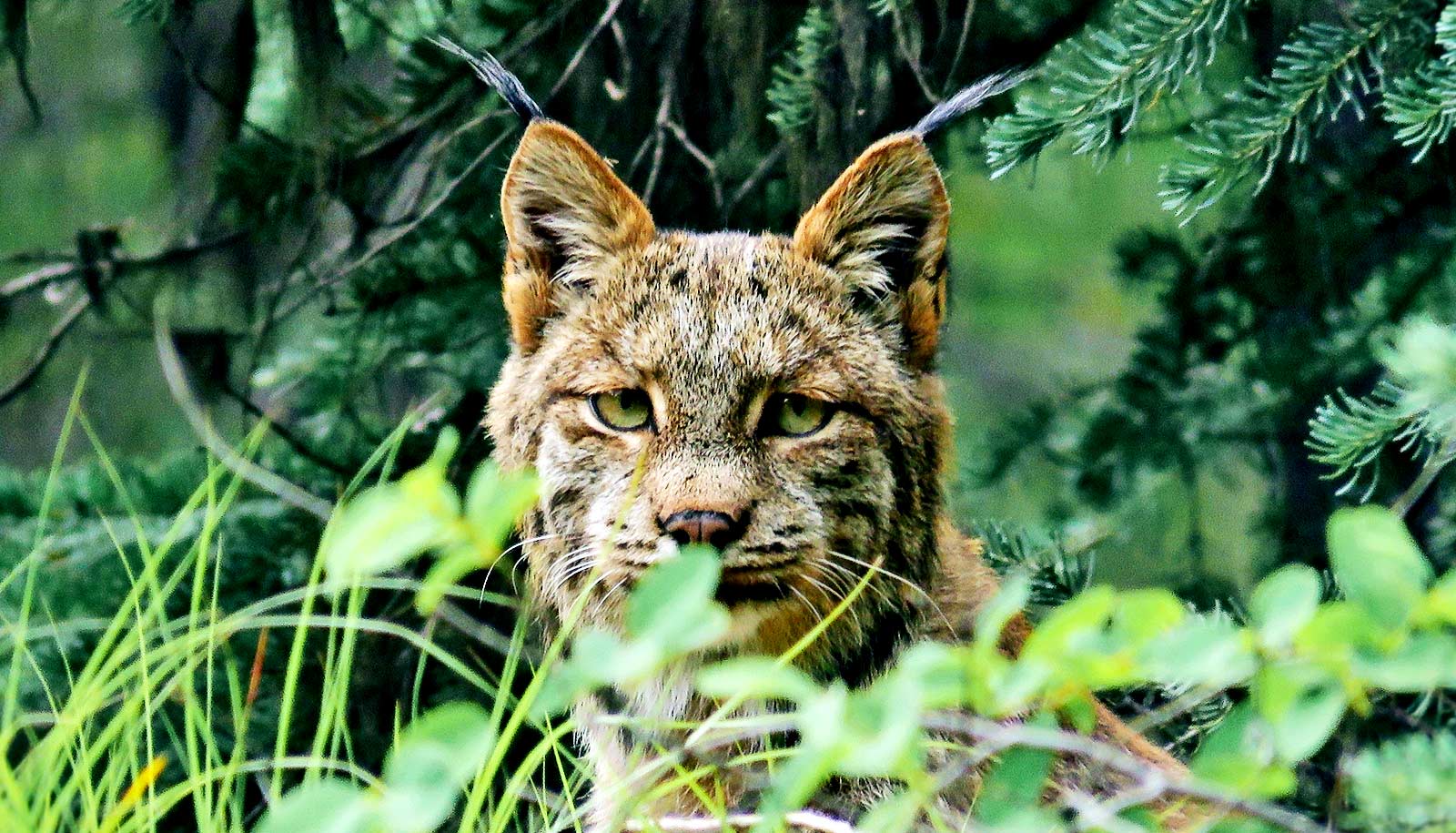Using a Fitbit and a spy mic, researchers have gained new insight into the behavior of the elusive Canada lynx.
The new study also provides a first look at how miniaturized technology can open the door to remote wildlife monitoring.
“We captured chases, screams of the prey as they were caught, calls of the prey as they escaped, and bones crunching…”
“Working on one of the boreal forest’s top predators, the Canada lynx, we found that two different technologies, accelerometers and audio recording devices, can be used to remotely monitor the hunting behavior of predators, even documenting the killing of small prey,” says lead author Emily Studd, a postdoctoral fellow under the supervision of Murray Humphries at McGill University and Stan Boutin at University of Alberta.
“We captured chases, screams of the prey as they were caught, calls of the prey as they escaped, and bones crunching, along with friendly and aggressive interactions between different lynx,” Studd says.
“A lot of people want to know what wild animals do when we can’t see them. The ability to continuously record their movements and sounds in their natural environment can provide insight into mating rituals, parental care, social interactions—even how individuals differ from one another or change over time,” says coauthor Allyson Menzies, a recent PhD graduate.
Understanding the hunting behavior of predators is key information for ecologists, providing insight into the well-being of an ecosystem, the researchers say.
“Unfortunately, predators are naturally secretive animals due to their need to sneak up on their prey, which makes studying them and recording this information incredibly difficult,” Studd says.
The researchers’ use of accelerometers and audio recorders provide two new, highly effective methods that can be applied to any predator to monitor behavior and collect information.
The paper appears in the journal Methods in Ecology and Evolution. Additional researchers are from the University of Alberta, Trent University, and McGill.
The Natural Sciences and Engineering Research Council, the Weston Family Foundation, and Institut Nordique du Québec, funded the work, which is part of the Kluane Canada lynx project.
Source: McGill University


